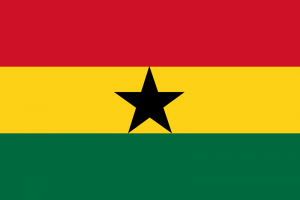Language/Twi/Grammar/Conditional-Mood
Hi Twi learners! 😊
In today's lesson, we will be discussing the conditional mood in Twi. This is an important part of the language and understanding it will help you to communicate more effectively.
Consider exploring these related pages after completing this lesson: Future Tense, Twi Grammar: Descriptive Adjectives, Negation & Give your Opinion.
Overview[edit | edit source]
The conditional mood is used to express a hypothetical situation or a future event that is dependent on another condition. It is also used to express wishes or requests. In Twi, the conditional mood is formed by adding the suffix -baa to the verb stem.
Formation[edit | edit source]
The conditional mood is formed by adding the suffix -baa to the verb stem. For example, the verb stem for "to go" is "yɛ", so the conditional form would be "yɛbaa".
Regular Verbs[edit | edit source]
For regular verbs, the suffix -baa is added to the verb stem. For example, the verb stem for "to eat" is "ka", so the conditional form would be "kaaba".
Irregular Verbs[edit | edit source]
For irregular verbs, the suffix -baa is added to the verb stem, but the verb stem may change slightly. For example, the verb stem for "to be" is "bɔ", so the conditional form would be "bɔbaa".
Usage[edit | edit source]
The conditional mood is used to express a hypothetical situation or a future event that is dependent on another condition. It is also used to express wishes or requests.
For example:
- If I had the money, I would buy a car. (Hypothetical situation)
- If you study hard, you will pass the exam. (Future event dependent on another condition)
- I wish I could fly. (Wish)
- Please help me if you can. (Request)
In Twi, these sentences would be translated as follows:
- Me nso me nni hɔ a, me bɔɔ yɛ kɔmfoɔ.
- Wɔde wɔn a wɔwɔ no, ɛnyɛ wɔn ho.
- Me nni hɔ a, me bɔɔ yɛ hwee.
- Ma me nso, ɛbɛyɛ a ɛwɔ sɛ wo nso.
Conclusion[edit | edit source]
In this lesson, we have discussed the conditional mood in Twi. We have seen how it is formed and how it is used. We hope that this lesson has helped you to gain a better understanding of the conditional mood in Twi.
If you have any questions, please ask them in the comments section below.
Feel free to edit this wiki page if you think it can be improved. 😎
Other Lessons[edit | edit source]

